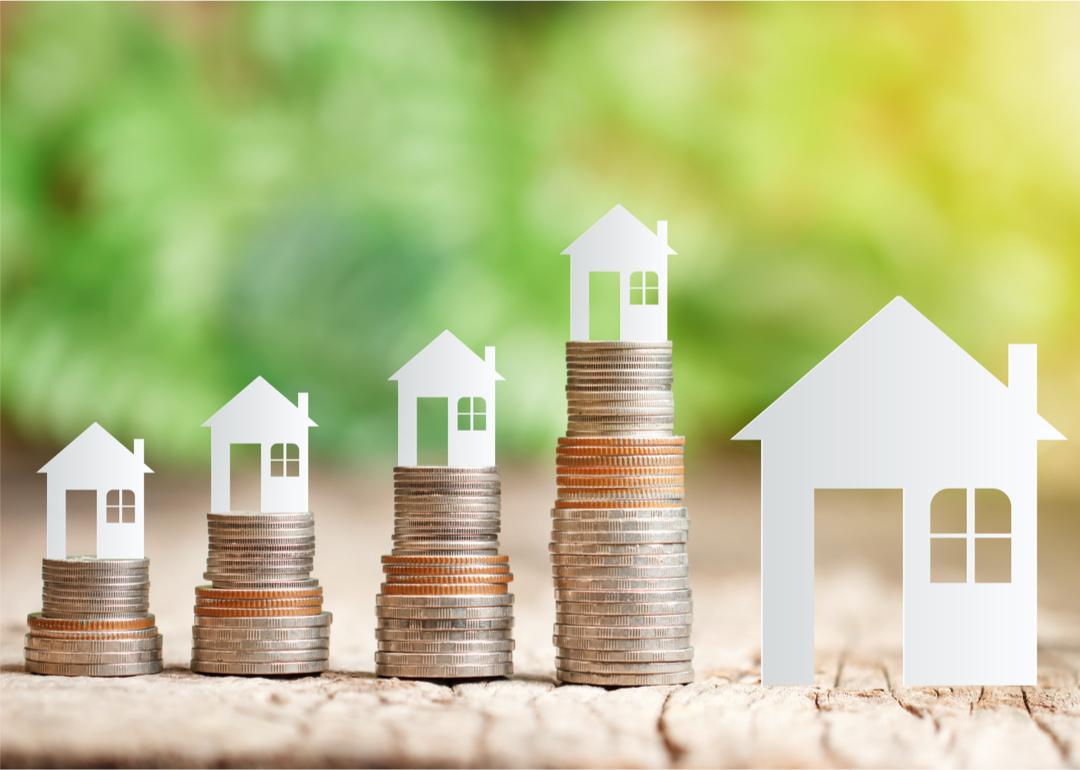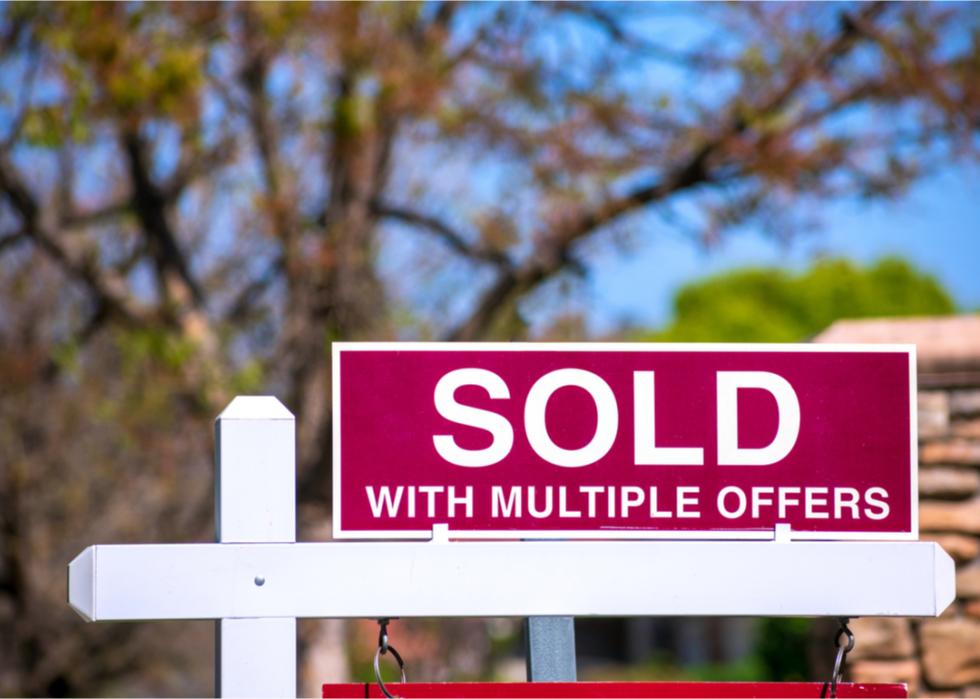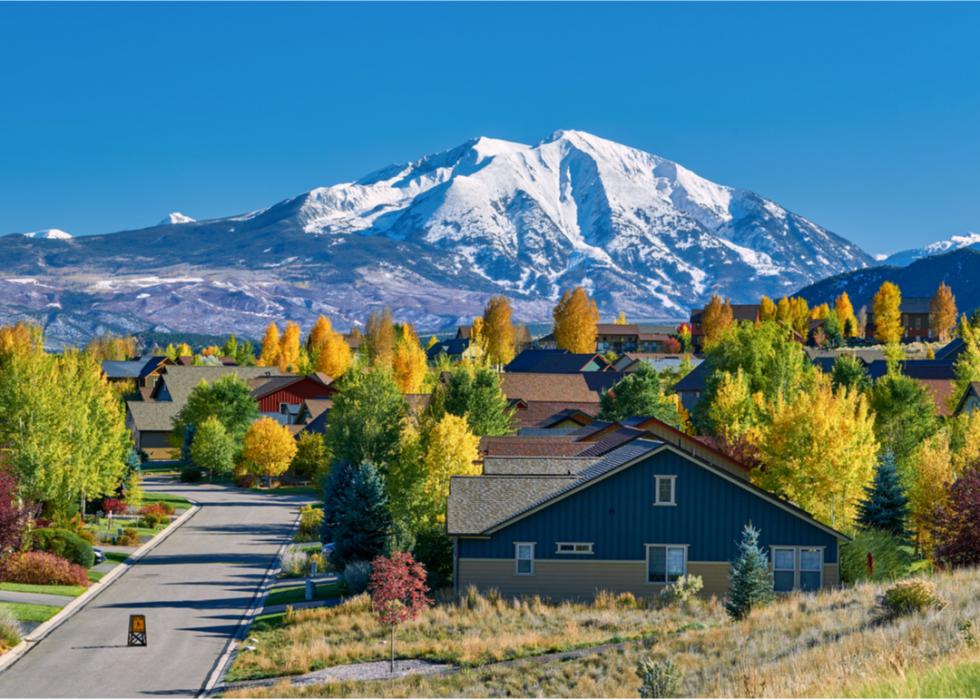
Regions where home prices are growing the fastest
This story originally appeared on Zerodown and was produced and distributed in partnership with Stacker Studio.
Regions where home prices are growing the fastest
The last year of record-making housing market gains was truly one for the books. Skyrocketing demand for housing across the country during the COVID-19 pandemic exacerbated inventory shortages and caused bidding wars as well as significant pricing upticks across the nation. Rarely in modern history have potential homeowners and investors seen that kind of explosive growth.
To determine the regions where home prices are growing the fastest, ZeroDown analyzed the four U.S. regions (Northeast, Midwest, South, West) using August 2021 data from the U.S. Census Bureau and the U.S. Department of Housing and Urban Development. Next, median sales prices were compared for homes sold over the past year. The data show how these prices have changed between Q1 and Q2 in 2021, as well as how prices have changed between 2018 and 2021. The regions are ranked by the percentage growth since the first quarter of 2021.
Among the many different factors helping to drive that growth were incredibly low mortgage interest rates, which dropped to record lows at the start of the pandemic. That event enticed buyers to purchase homes at a time when they could save money on interest. The shift to a remote work culture also helped propel the demand for housing, as millions of workers were suddenly able to pick up and move somewhere new without having to find new employment. And, a new generation of buyers—millennials—also entered the market, which helped to drive up demand.
But while heightened demand for homes over the last year was somewhat unexpected, one of the most interesting outcomes was the massive growth in median home sales prices that occurred across the board. All markets across the nation saw an uptick in housing prices over the last year, but some regions had much higher pricing increases than others.
Keep reading to see what the data showed about the home pricing growth by region.

United States
- Median sales price in 2021 (second quarter): $374,900
--- Growth since first quarter of 2021: 1.4% ($369,800)
--- Growth since second quarter of 2020: 16.2% ($322,600)
--- Growth since 2019: 16.6% ($321,500)
--- Growth since 2018: 14.9% ($326,400)
When compared to the relatively stagnant growth nationwide that occurred from 2018 to 2020, the staggering overall pricing growth nationwide from 2020 to 2021 is even more impressive.
The median sales price across the United States is still trending upward thanks to record-low mortgage rates, urban flight, and the ability for many homebuyers to work remotely from any location. The average home sales price jumped by over $5,000 from the first to the second quarter in 2021, signaling that the uptick in median sales prices may continue for the near future. Housing supply shortages also continue to occur in most markets, and buyers are still competing for contracts on listed homes. In many cases, offers are still being made for well above the asking price, which just keeps pushing the median sales price further upward.

#4. Midwest
- Median sales price in 2021 (second quarter): $315,400
--- Growth since first quarter of 2021: -1.6% ($320,600)
--- Growth since second quarter of 2020: 9.8% ($287,200)
--- Growth since 2019: 9.1% ($289,200)
--- Growth since 2018: 8.4% ($290,900)
The Midwest has seen a significant uptick in sales price over the last year, with increases likely pushed upward by a combination of low inventory, a lack of new home construction, and a shift in demographics in the home buying market. Unlike many other regions, the growth in housing prices was not driven by new residents moving to the Midwest.
The 10% increase in average home sales prices in the Midwest from 2020 to 2021 is also surprising given that the average sales price of homes in the region actually declined from 2018 to 2020. In fact, home sales prices in this region were dropping until the pandemic hit, with the average sales price decreasing by $3,700 from 2018 to 2020. It’s quite likely that the price growth in this region will slow down in the near future given that there has already been a drop in average home sales price from the first to second quarter of 2021.

#3. West
- Median sales price in 2021 (second quarter): $485,500
--- Growth since first quarter of 2021: 2.5% ($473,500)
--- Growth since second quarter of 2020: 20.1% ($404,300)
--- Growth since 2019: 19.0% ($408,000)
--- Growth since 2018: 18.2% ($410,600)
Red-hot markets in western states like Colorado and Arizona were in high demand at the height of the pandemic, which helped to propel the massive growth in the median sales prices in this region. Home prices in the West leaped by over $81,000 from 2020 to 2021 alone. Inventory shortages in many of these markets—caused, in part, by an influx of transplants from southern states—have only helped propel the average sale price upward over the last year.
As with some of the other markets on this list, the uptick in prices from 2020 to 2021 is also surprising, given that home prices in the region were stagnant from 2018 to 2020, with average sales prices in the region declining by about $6,300 during that time frame. Once the pandemic hit, though, that trend was reversed, and the prices have been on a steady incline ever since. In fact, the average sales price in the West actually jumped by another $12,000 from the first to the second quarter of 2021, making it clear that the uptick in prices isn’t over with yet in this region.

#2. South
- Median sales price in 2021 (second quarter): $337,500
--- Growth since first quarter of 2021: 3.1% ($327,300)
--- Growth since second quarter of 2020: 16.1% ($290,600)
--- Growth since 2019: 16.8% ($289,000)
--- Growth since 2018: 14.6% ($294,600)
The high demand for housing in southern metro areas like Austin, Texas, helped to drive the upward trend in the region. The Austin metro area has seen a median price increase of 45.1% over the last year thanks, in part, to a tech industry exodus from California to Austin, and the crushing demand for housing, in that and other metro areas like Dallas and Houston, have only helped to push prices higher for buyers in the region.
What’s surprising about the huge surge in prices in the South is that prior to the pandemic, the housing price in the region only saw a moderate increase of about $1,600 from 2019 to 2020. The average home sales price actually dropped from 2018 to 2019. Based on current trends it does not appear the South will have a significant drop in sales prices in the near future, though, as the average price in the region increased by another $10,000 from the first to second quarter of 2021.

#1. Northeast
- Median sales price in 2021 (second quarter): $567,100
--- Growth since first quarter of 2021: 10.8% ($511,700)
--- Growth since second quarter of 2020: 28.6% ($441,000)
--- Growth since 2019: 17.5% ($482,500)
--- Growth since 2018: 17.0% ($484,600)
The most significant median home sales price surges are happening in the Northeast. The region saw an incredible price increase of over $126,000 from 2020 to 2021, and the price growth doesn’t appear to be slowing down, either. The price of homes in the Northeast has continued to increase in 2021, growing by $55,400 from the first to second quarter of 2021.
While cities like Boston and New York have traditionally kept the housing prices high in the Northeast, both the suburban and metro areas in the region are also driving the current price hike. Areas like Fairfield County, Connecticut, which is where one would find Greenwich and other suburban towns, are leading the way, with Fairfield County’s median sales price increasing by a whopping 39% over the last year—which was the biggest increase in the entire United States.



